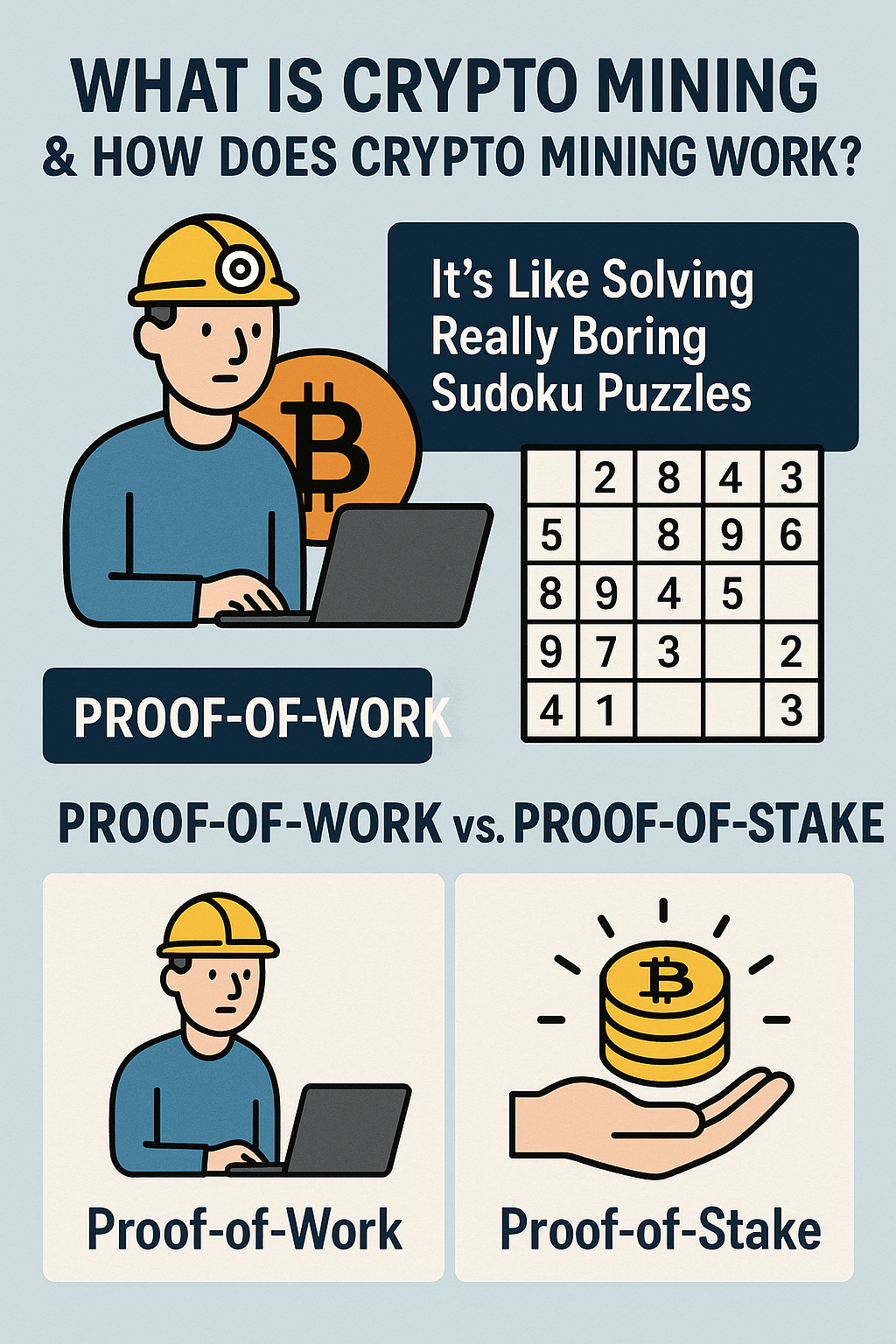Welcome to the rabbit hole of crypto mining. It’s a term you’ve heard thrown around, probably in the same breath as "Bitcoin," "blockchain," and "getting rich quick." But what is it, really? Is it a digital gold rush for tech wizards in dark basements, or is it something more? Spoiler alert: it’s both, and it’s way more interesting than you think. This guide will break down the weird, wonderful world of crypto mining without the dense jargon.
What is Crypto Mining? Explained Like You’re 5 (But Cooler)
Imagine a giant, global, public notebook that everyone can see but no one can erase. This is the blockchain. Every time someone sends or receives crypto, that transaction needs to be written down in the notebook to make it official.
Crypto mining is the process of being the person who gets to write the next page of transactions in that notebook.
But to earn that right, you have to solve a super-hard math puzzle. Computers all over the world compete to be the first to solve it. The winner gets to add the new "block" (or page) of transactions to the blockchain and, as a reward, is given brand new cryptocurrency.
So, in short, crypto mining is the backbone of many cryptocurrencies. It’s how transactions are verified and how new coins are created.
How Does Crypto Mining Work? (Spoiler: It’s Like Solving Really Boring Sudoku Puzzles)
The "math puzzle" miners solve isn't complex calculus; it's more like a brute-force guessing game. The computer takes a bunch of data (including the new transactions) and keeps guessing a random number, called a "nonce," over and over again at incredible speeds.
The goal is to find a nonce that, when combined with the other data, produces a specific type of digital signature called a "hash." This process is what makes the blockchain secure.

Types of Crypto Mining: From Garage Nerds to Mining Farms
The tools for mining have evolved dramatically over the years.
- CPU Mining: Using a computer's main processor. This was possible in the early days of Bitcoin but is no longer effective for most major coins.
- GPU Mining: Using powerful gaming graphics cards. This became the standard for many coins like Ethereum before its switch to Proof-of-Stake.
- ASIC Mining: Using custom-built machines designed for one purpose: mining a specific crypto at maximum speed. This is the standard for Bitcoin today.
Is Crypto Mining Still Profitable in 2025?
The short answer: It's complicated. The days of getting rich mining on a single laptop are long gone for major coins like Bitcoin. Profitability depends on a simple formula: Reward > Cost.
Your costs are the price of your hardware (which can be thousands of dollars) and your electricity bill. To be profitable, you generally need access to very cheap electricity and the most efficient hardware available.
Proof-of-Work vs. Proof-of-Stake
Proof-of-Work (PoW) is the mining system we've described. However, many new cryptocurrencies, including Ethereum, use a more energy-efficient system called Proof-of-Stake (PoS). In PoS, users lock up their own crypto as collateral to verify transactions, eliminating the need for energy-intensive mining. While PoS is growing, PoW is still the foundation of Bitcoin and is considered by many to be the most secure system.
.webp)
Environmental Impact & Common Myths
The energy consumption of Bitcoin mining is a huge and valid concern. However, the narrative is often more nuanced. Many miners are incentivized to find the cheapest power on the planet, which is often renewable or otherwise wasted energy. The industry is actively pushing for greener solutions.
Myth Debunked: "Only tech wizards can mine." False. While technical, modern software and countless online tutorials have made it accessible for anyone patient enough to learn.
Getting Started With Crypto Mining
If you're curious, here's a sane way to approach it:
- Choose the Right Coin: Forget mining Bitcoin as a beginner. Look for smaller PoW coins that are still mineable with GPUs.
- Join a Mining Pool: Don't try to mine solo. A mining pool combines the power of thousands of miners, increasing the chances of finding a block. The reward is then split among everyone. For beginners, this is the only logical choice.
.webp)